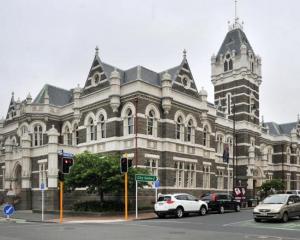
Out of the ordinary or business as usual
While having sympathy for the passengers affected by the recent Virgin aircraft emergency, it is worth considering that the 18-hour trip passengers complained of is a regular event facing Dunedin residents wishing to travel to and from Australia. Having to transit via Auckland, Christchurch or Wellington usually involves similar travel times. In fact quite often this means an overnight stay at additional expense.
On one occasion the only available flight home involved flying Brisbane, Sydney, Auckland, Dunedin over the space of over 24 hours.
Dulls’ville
We really are working to make Dunedin the dullest and most unattractive city in the country. Destroying our hugely significant, highly visible historic buildings is so shortsighted, stupid at best.
Significant historic emblems at the university have disappeared, no trains yet, not even to Middlemarch, visitors still disappointed not being able to travel here by train from Christchurch, losing the Sports Hall of Fame. What else can we get rid of?
Where are the positive creative ideas and plans for our city?
Perhaps through the ODT this is the time and place for us, as members of our community, to put forward suggestions and to discuss ideas to make a difference. Seize the moment.
Trowelling it on
There's bulldust, and then there's solid bull byproduct of a consistency for spreading. In response to questions of why all bins were compulsory even when unnecessary because of composters, "offering a bespoke system where individual households can opt out of one or more kerbside services would have added considerable complexity and costs to the services," a Dunedin City Council spokesman trowelled.
Au contraire. Savings in the number of bins required would have resulted, and simplicity — unless it is intended that to avoid bafflement we are expected to put our bins out on the correct days even when there is nothing in them so as maintain consistency for the collectors.
Care questions remain
In Robin Gauld et al’s recent study "Quantifying and understanding the impact of unmet need on New Zealand general practice" the data reveals a disturbing asymmetry of secondary care responses.
Such important information should have been always available under the relevant DHBs and should not have needed a research team to reveal it. It has long been felt that the southern (Otago and Southland region) have been disadvantaged with population-based funding formulae and although the published data does not prove this to be the case it is revealing to compare the rest of the South Island with here and large centres in the North Island.
Canterbury, South Canterbury and the West Coast seem to have significantly lower refusal of service rates. For the second comparison year (2022), southern (at 54%) has the worst (and most alarming) outcome. Population adjusted statistics would help.
It is a pity the researchers did not include GP practice comments from Timaru or Christchurch. Nonetheless, important questions remain over the benchmarking of services and access.
[Stephen Chalcroft is a retired geriatrician and medical director of the former SDHB.]
Because you can, does not mean you should
The article, "Intersection ‘accident waiting to happen’" (ODT 12.6.24), confirms my view.
This intersection's unorthodox configuration, with multiple adjacent hazards, isn't fixable with signs. The Dunedin City Council denying the problem, and locals’ evidence, mirrors my experience.
The DCC Transport unit is autonomous, making decisions contrary to the NZ Road Code, installing confusing non-compliant signage and road markings, increasing danger.
This intersection design, though legitimate, is flawed in practice. It presents a multitude of rules at once, normally seen in isolation or delayed.
Pedestrians are beset with myriad indications as vehicles navigate it, with everyone put at unnecessary greater risk.
Required driver signalling and give way actions are confusing, only the experienced driver can navigate through with compliance. Drivers do so with trepidation, knowing that following indication rules confuses pedestrians.
While re-designing intersections can be creative, this layout is a case of just because you can, doesn’t mean you should.
Address Letters to the Editor to: Otago Daily Times, PO Box 517, 52-56 Lower Stuart St, Dunedin. Email: editor@odt.co.nz












